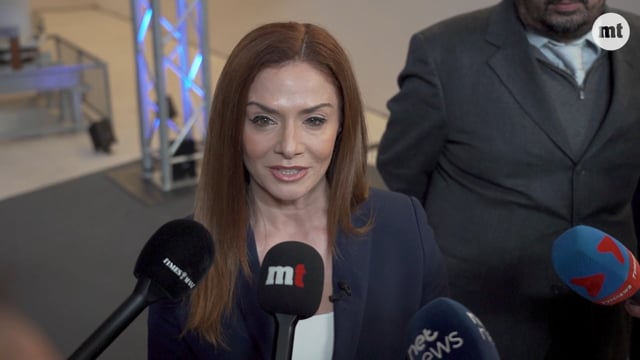[WATCH] Italy approves permit to develop Malta’s second interconnector
Second interconnector to Sicily on track after Italy approves final development permit • Cable will be 122km long, with 99km being laid on the seabed • The €300m project will provide Malta with 225MW of energy


Malta can start laying down a second interconnector to Sicily after Italy approved the final development permit, Energy Minister Miriam Dalli said.
The permit, issued by the Italian Ministry for the Environment and Energy Security (MASE), keeps the project on track for final commissioning in 2026, she said on Friday.
A 122km-long high voltage cable will connect Magħtab with Ragusa in southern Sicily and will carry a maximum of 225MW of electricity. The project will cost €300 million with EU funds covering €165 million under the European Regional Development Fund 2021-2027.
At least 99km of the cable will be laid on the seabed in the Sicily-Malta Channel. The subsea cable will be buried in a ditch dug into the seabed or where this is not possible be protected by rocks.
This is the second interconnector between Malta and Italy, the first having been commissioned in 2015.
Dalli said a second interconnector will give Malta greater security of supply and enables the island to export any additional electricity generated by large-scale renewable energy projects.
“We are working hard to deliver the projects we have planned as part of our energy vision, including strengthening our distribution infrastructure, supporting the expansion of renewable energy and now we are on track to delivering the second interconnector,” Dalli said.
The minister thanked her Italian counterpart Gilberto Pichetto Fratin for the close cooperation.
Interconnect Malta, a Maltese government company that is tasked with the project, has already obtained the Maltese development permit. The company has also been working on the tendering processes for the various engineering, procurement and construction contracts.
“Following the start of civil works in Malta, with the construction of culverts in Maghtab already underway, this favourable outcome will allow us also to initiate works on the 21km stretch between Marina di Ragusa and Ragusa in Italy and in due course, and the channel between the two states,” engineer Joseph Vassallo said.
Interconnect Malta is separately working on two battery energy storage systems (BESS) and is managing the tendering process for the offshore floating wind farm project.
Security of subsea cables
Asked whether government was taking any precautions in view of suspected Russian sabotage of subsea cables between Finland and Estonia, Dalli said Malta’s policy was to diversify energy generation.
She said the second interconnector was at a safe distance from the first one but the island also sought to have its own indigenous sources. “These include a push for more renewable energy on land and the project to develop floating offshore wind turbines,” she said.
Accidents that happened in 2019 and 2022, whereby the existing interconnector was damaged by ship anchors exposed the vulnerability of depending on one subsea connection.
Dalli said a second interconnector would not only offer security of supply in case of accidental damage but also allow maintenance works to take place without disrupting supply.

.png)
.png)










.png)








